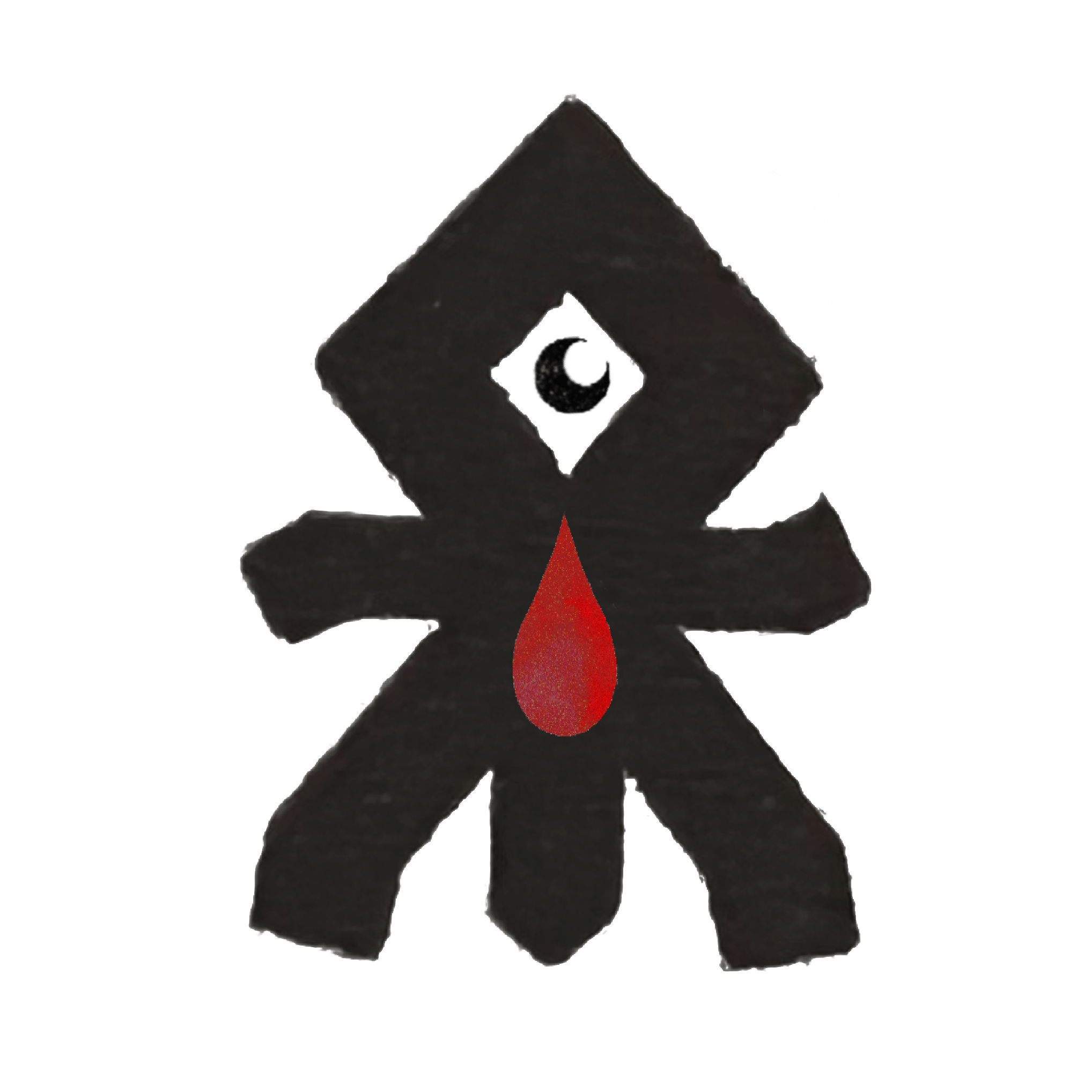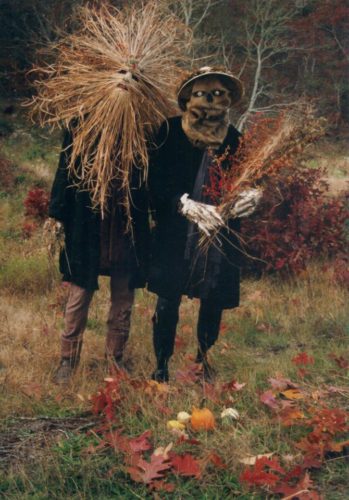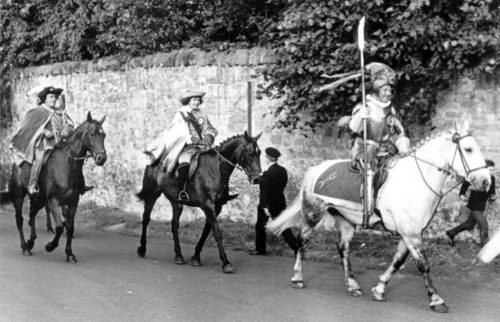Lunastal. This time of year has always been special to me, which we try to align to the new moon or full depending. It marks the beginning of the “folk Autumn” season or second half of summer in the Celtic Calendar, midsummer. Nature’s signs tell us its time when we are able to gather the berries such as blae and bilberries and the collect the first raspberries. The fields of yellowing billowing wheat, barley and other grains, dotted with the red of poppy, as they are waiting to be cut.
On Lammas Day
The glad fly
loses an eye
Lùnastal – The two festivals of midsummer ( or start of folk autumn)
There are two linked but distinct festivals at this time of year. The Gaelic possibly Celtic festival of Lunastal, Lunasdal, and Lughnasadh and Lammas. The first is Lugh of the Tuatha De Dannan festival. The second is Lammas from the word half-maesse or hlámmaesse meaing loaf mass or loaf feast, the festival of the Anglo-Saxons and quite possibly influenced by the Norse.
Lunastal – celebrating Lugh or Lughaidh lamhfhada or lleu. Folks say that Lughansdah/lunastal was in honour of Lugh’s foster mother Tailltiu buried beneath the ground where the first Tailleten festival was held. This festival involved games, such as horse racing and these were possibly held in honour of the dead, fairs, couplings and hand fastings and other courtings. Unlike the common belief that hand fasting’s happened in May, this is not the case as the lady folk would have been off to the Shielings to work the dairy herds at this time and pretty removed from the men folk, they would come back around Lunastal to help gather in the harvest.
Lammas, a festival of the grain focused on honouring the ground and fruits of the harvest and its associated spirits. These spirits were captured in Kern idols or corn dolls over the coming year. These are similar to what we would find in our modern day harvest festivals where the loaf of bread is offered to the church symbolic of the harvest. Here we have reminiscent of the honouring of the Corn (kern or grain and not sweetcorn) mother and corn maiden. Activities such as saining and bannocks etc. would also occur as did at times big fights between different teams of herders, marriage fairs and washing of horses in the sea and large fires. Some of these traditions we see moved to Michelmas of le Fheil Micheal (the autumn equinox).
Today, the mythology of the two different approaches have joined together and overlay each other in such a way its hard to tell the difference. Neo-pagans have muddied the waters in this regard to suit their interpretations, this has been further diluted and changed by the impact of traditional witchcraft and distorted through the lens of Wicca, Druidism or other approaches.
To the modern-day Urban dweller, none of these activities may even make any sense. I have heard that folks also find it hard at times to relate to this quarter day. They are so far removed from the work in the fields and the gathering of a wild berry harvest that it just doesn’t chime with them. I do find urban folks prefer the ideology of the equinox’s and solstice’s to that of the old quarter days. I guess it just makes more sense to them as they can measure it perhaps? Who knows.
Lùnastal -The riding of the Marches
We have the riding of the marches at this time too where folks “ride oot” and crys of “safe out and safe in” can be heard from their district and parish to make sure that the boundaries are safe for another year. The boundaries of the Parish Known as the “marches” are ridden around to check for incursions or people stealing land. Its also associated with turf cutting and claiming the land in the old folk way, of making an oath on the turf. A way of keeping the parish safe. The ridings are usually a very drunk affair. Whisky and milk are the traditional “riding out” morning drinks, with riders falling from horses into hedges and ditches. When they arrive back to the town, after the pomp and ceremony has been dealt with, it’s pretty much an all-out,all-day party. The ridings are not an older Celtic custom (dating back to the earliest of Samhuinn, 1497, as far as I have managed to discover). It’s interesting that Horses are involved though. Lunastal being associated with horse racing and saining of the Horses in the sea.
Lùnastal -The removal Cheese – mulachag imrich
As we know this time of year was the time folks came back from the Sheilings and it was a custom to make what was termed the removal cheese, mulachag imrich. When leaving the summer pasture and returning with the cattle to the strath a small cheese made of the curds of that morning was given to all the children who were at the àirdh ( hill pasture) for luck and good will. This hastily prepared cheese was the mulachag imrich and was taken with the rest of the furniture home. This was a form of magical protection and combined with other apotropaic activities that were carried out.
Saining and Tar
The mischievous spirits were to be kept away from the cattle at this time as they moved back to the farms and this protection should work for the next three months. This saining was done with tar being put on their ears and tails. Ranns sung to the udders of the cows and red and blue threads weaved into their tails. Horses and cattle were taken for a swim in the sea as a form of blessing and saining. This is clear from the legislative acts put in place to stop this from happening in places like Edinburgh and its surrounds. Balls of bulls hair were also left in the milk pails others speak of the act of placing herbal sachets into the milk pails for protection. All that was important at this time of year was basically protected.
Rowan crosses
“Rawn crosses” (Rowan crosses) were made and placed with great secrecy on barn doors and stables and over the front doors etc. This was carried out at midday and when it was being carried out you wouldn’t speak to anyone and it was done without the knowledge of anyone.
Part two of this post explores the Lunastal marriage fairs, the corn idol or cailleach doll and why this festival is still significant in Scotland today.





3 comments
Great post! It was a surprise to the the East Lothian common riding!
The blurring of American crops is something annoying in this celebration. Corn wasn’t introduced to Ireland and Scotland until the 1700s. Corn dollies would not have been a thing until then, yet there are claims of “ancient” ancestors using corn. No. They wouldn’t have made anything with corn in pre-Christian times. Other grains like wheat and barley would have been used.
You have a point about the modern use of wheat and rye etc no going in place in ancient festivals but festivals evolve to fit the folk culture it would be very weird today if people didn’t acknowledge wheat around harvest time. It’s worth noting though the word corn is used in Scotland a lot to refer to any grain with the seed still in it or sometimes even corns of salt (meaning grains of salt as in corned beef) its found compounded in the word barleycorn or we we use it to refer to oats as well (old Saxon Korn grain and the old norse Korn. So when we refer to corn idols or quern idols or kern dolls ( dolls stemming from idoL) we are referring to any grain we would have had growing which we call corn at least from the 16th century onwards. When I refer to the word corn in this instance I’m referring to an older use of the word, we called everything corn and it wasn’t until later that only Corn is Corn today. But you are very correct in the older Scottish festivals woudl have made “corn dolls” like we see today made of corn husks.